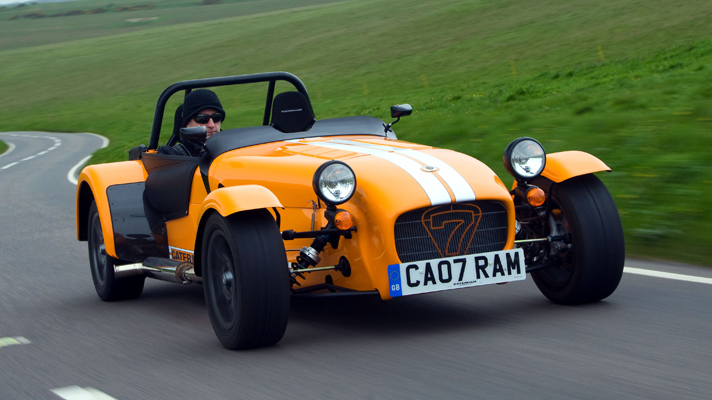
The new Caterham Supersport is not a fast car. Oh, sure, it'll hit 60mph in under five seconds from a standing start, but here's what you have to do to reach that point:
a) Assemble your Supersport from the large box of important metal bits and bolts. If you are a decent mechanic, this will take you about 90 hours. If you are TopGear, this will take several years. Alternatively, you can pay Caterham an extra £3,000 to assemble your car for you. This is probably a better idea.
b) Post yourself, and your legs, into the skinny composite race seat.
c) Fish out the straps from various anatomical crevices and fasten the four-point race harness.
d) Realise you are pressing all three pedals simultaneously with your right foot because your shoes are too wide. Decide it would be wise to change shoes.
e) Unfasten the four-point race harness.
f) Unpost yourself from the skinny composite race seat.
g) Buy slimmer shoes.
h) Discover that, in the time it has taken you to build the car and buy new shoes, it has started raining. The Supersport does not have a roof or a windscreen and therefore cannot be used in the rain.
i) Wait for it to stop raining. If you live in Britain, this may take several months.
j) Post, fasten, etc.
k) Discover you have left the keys in the pocket of your jeans and cannot extricate them from under the harness straps.
l) Unfasten, unpost, etc. Remove keys from pocket. Repost, refasten.
m) Discover rear-view mirrors are pointing at the floor. Realise you cannot reach rear-view mirrors when harnessed down...
You get the picture. Not a quick process. And, even when you're finally up and running, the fact you're driving a bright orange Seven with an exhaust noisier than an industrial drilling operation, a car that screams: ‘Officer! Please stop and question me!' rather discourages you from flirting too closely with the local speed limit. As does the fact that the Caterham is so low-slung that buses and vans have no idea you're there. And that the rear track is at least nine foot wider than the front...
But when you wind the Supersport out to 7000rpm and drink in the noise and the wasps and the stupefying, mass-free acceleration, all of the hassle and bucking and unbuckling and footwear expense required to get there becomes irrelevant. This is driving distilled: one hundred per cent proof. The Supersport is derived from the race car that competes in Caterham's one-make series, with enough modifications to make it road legal and precisely no more. It sounds like a race car. It drives like a race car.
The uncompromising purity of purpose here makes even a KTM X-Bow feel like an over-specced Lexus LS. ‘Utilitarian' is the dominant interior vibe. In fairness, there are a handful of buttons on the Supersport's dash, purporting to operate the wiper blades and windscreen heater. The Supersport has neither wipers nor a windscreen. It does get a tiny ‘aero screen', which ceases to have any effect above about 40mph beyond funneling bees into your eyes.
The Supersport gets Ford's tried-and-tested-and-tried-and-tested 1.6-litre ‘Sigma' unit, tuned for 140bhp at a heady 6900rpm. So it isn't the quickest Seven - take a bow, R500 - but it might just be the most instinctive, the most direct. It weighs 520kg, which is a little less than the average publican. Forty mph feels like eighty. Seventy feels like the epicentre of a catastrophic meteorological event. The five-speed manual ‘box is absurdly close-ratio: top speed is just 120mph. Your head would be separated from your neck some time before you reached this speed. Driving this car fast isn't a comfortable experience, but it's a mighty engaging one.
The Supersport feels like nothing else on the road, the cheery, impractical result of Caterham's fifty-odd years of sharpening the Seven to a very pointy point. For £19,995 (plus that necessary £3000 for assembly, plus £40 for a pair of narrow shoes), nothing offers so much entertainment per pound. Or per kilo.
